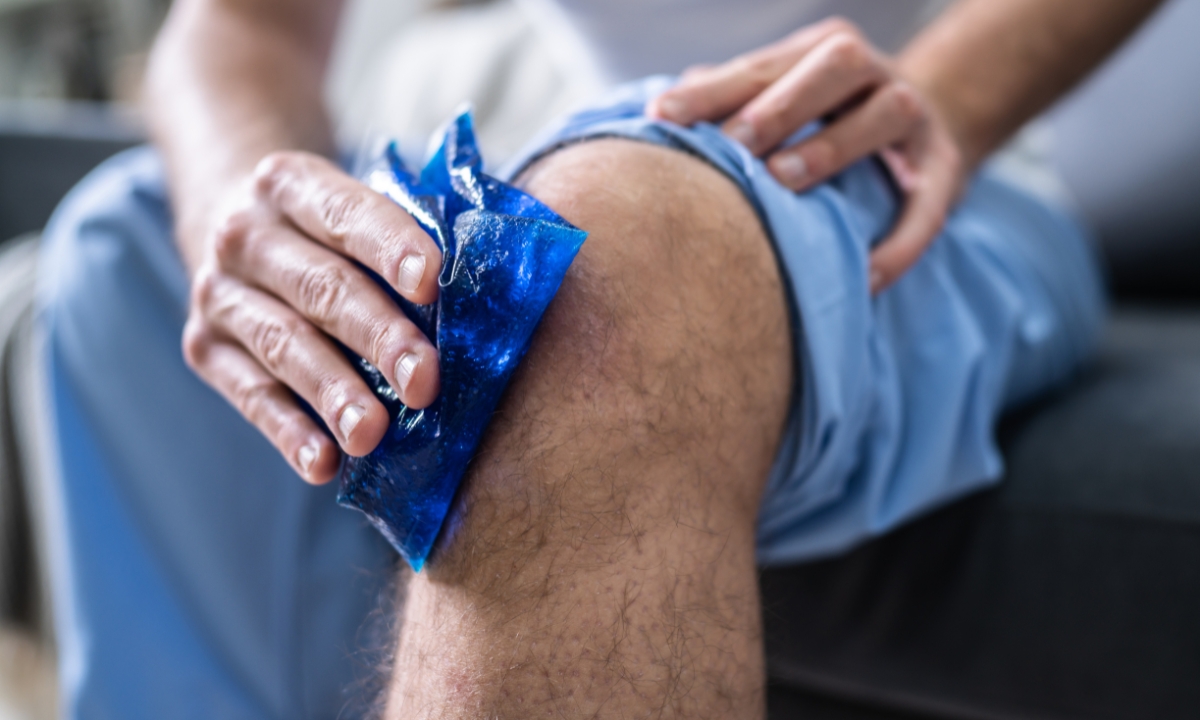When it comes to physical rehabilitation, pain management and promoting healing are top priorities. There are a wide variety of differing techniques to achieve these goals, and two of the most readily available tools are cold and heat therapy.
While their effects seem contradictory, both play crucial roles in the rehabilitation journey. Gaining an understanding of the contrasting benefits of cold and heat therapy and how they can be used effectively can be beneficial for rehabilitation and treatment of both acute and chronic pain issues.

A Look at the Science of Cold and Heat Therapy
It’s one thing to understand the effects and benefits of cold and heat therapy when it’s applied. But why does it work? What happens “behind the scenes” in the human body with this type of physical therapy technique?
Cold and heat therapy work through opposing physiological processes to achieve different therapeutic benefits. Cold therapy, also known as cryotherapy, causes vasoconstriction – a narrowing of blood vessels. This reduces blood flow to the injured area, minimizing swelling and inflammation. Additionally, cold numbs nerve endings, offering temporary pain relief.
Heat therapy, on the other hand, induces vasodilation – a widening of blood vessels. This increases blood flow to the affected area, delivering oxygen and nutrients needed for tissue repair and promoting muscle relaxation. Both cold and heat therapy can be valuable tools for managing pain and promoting healing, but their effectiveness depends on the specific injury and stage of recovery.
Understanding Cold Therapy
Cold therapy, also known as cryotherapy, involves applying low temperatures to an injured area. This has a number of beneficial effects including pain reduction. For example, cold constricts blood vessels, reducing blood flow to the affected area. This, in turn, numbs nerve endings, offering temporary pain relief.
Inflammation is a natural response to injury, but excessive inflammation can also hinder healing. Cold therapy reduces inflammation by slowing down the inflammatory process, minimizing swelling and discomfort. In addition, cold therapy helps to relax muscles that are in spasm, which can significantly improve range of motion and decrease pain.
When to Use Cold Therapy:
- Acute Injuries: Immediately following an injury like a sprain, strain, or minor tear, cold therapy can be highly effective. Apply cold packs within 48 hours of injury to minimize swelling and inflammation.
- Post-Surgery Pain: Cold therapy can be used after surgery to reduce pain and swelling at the surgical site.
- Muscle Soreness: Following a strenuous workout, cold therapy can help alleviate muscle soreness and promote faster recovery.
Cold Therapy Application Guidelines:
- Wrap It Up: Never apply ice directly to the skin. Wrap the ice pack or cold compress in a thin towel to prevent skin irritation.
- 20 Minutes On, 20 Minutes Off: Apply cold therapy for 20-minute intervals with 20-minute breaks in between. This prevents tissue damage from prolonged cold exposure.
- Listen to Your Body: Stop using cold therapy if you experience any numbness, tingling, or discomfort. Improper use of cold therapy can lead to skin irritation or frostbite if applied directly for too long.
Understanding Heat Therapy
Heat therapy, also known as thermotherapy, involves applying warmth to an injured area. This offers a distinctly different set of benefits compared to cold therapy. One of these is improved blood flow. That is because heat therapy dilates blood vessels, increasing blood flow to the affected area. This delivers oxygen and nutrients needed for healing, promoting tissue repair.
Heat also helps to loosen tight muscles and improve flexibility. This can be particularly beneficial for chronic pain conditions or stiffness caused by inactivity. And heat therapy can increase pain tolerance as well as bring momentary relief of pain by stimulating the release of endorphins, the body’s natural pain relievers.
When to Use Heat Therapy:
- Chronic Pain: Heat therapy can be helpful for managing chronic pain conditions like arthritis, muscle tension, and low back pain.
- Stiffness: If you experience stiffness before exercise or physical therapy, applying heat beforehand can help improve range of motion and prepare your muscles for activity.
- Pain Relief for Deep Tissues: Heat therapy can penetrate deeper into tissues compared to cold therapy, offering pain relief for deeper muscle strains.
Heat Therapy Application Guidelines:
- Gradual Warmth: Always start with a low heat setting and gradually increase the temperature to a comfortable level. Avoid using extreme heat.
- Moist Heat Preferred: Moist heat, such as a warm compress or a heating pad with a moist setting, is generally more effective than dry heat as it penetrates deeper into tissues.
- Time Limits: Apply heat therapy for 15 to 20 minute intervals at a time. Heat therapy risks include burns if used at extreme temperatures, and worsening inflammation if applied immediately after injury.
Combining Cold and Heat Therapy
In some cases, combining cold and heat therapy can be greatly beneficial. This approach, known as contrast therapy, involves alternating between cold and heat applications. Contrast therapy starts with cold by applying cold therapy for a brief period to reduce inflammation and pain. After the cold therapy application, heat therapy is then applied to improve blood flow and promote healing.
Contrast therapy, the alternating application of cold and heat, is generally most beneficial during the subacute phase of injury healing. This falls roughly between four days and two weeks after an injury, when the initial inflammation has begun to subside, but tissue repair is still ongoing.
Contrast therapy can be helpful for:
- Muscle Soreness: Alternating hot and cold can help manage muscle soreness after exercise by reducing inflammation initially and then promoting blood flow for faster recovery.
- Chronic Pain Management: For chronic pain conditions, this technique can offer temporary pain relief and improve circulation to the affected area.
Always follow recommended application times and consult a doctor if unsure.

Consulting with Pain and Performance Solutions for Total Pain Relief
While cold and heat therapy are readily available tools, it’s important to use them correctly and understand if they are appropriate for your specific condition. It is also important to understand that these applications can bring about pain relief and even promote healing, but they cannot “fix” a source of pain.
Our team at Pain and Performance Solutions can assess your injury or pain and issue and recommend the most effective personalized physical therapy treatment plans alongside the application of cold and heat therapy. We specialize in providing personalized care for issues such as chronic pain and recovery issues.
Through a combination of targeted exercises, hands-on therapies, and ergonomic guidance, we aim to not just alleviate your current discomfort but also empower you with tools to maintain a pain-free lifestyle.
Don’t let chronic pain and healing issues hold you back from enjoying life to the fullest. Take the first step towards relief by scheduling a consultation with us. Our dedicated team is committed to guiding you on the path to a more comfortable and active life.
Call us at 707-636-4404 or book an appointment online to start your recovery process.
